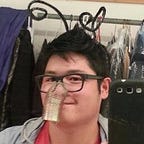X-Men’s Jubilee was probably one of the first Asian American superheroes comic readers can remember. Why? Because she was literally designed to be iconic. Jubilee (a portmanteau of her full name “Jubilation Lee”) was created by Chris Claremont and canonically born in Beverly Hills to Hong Kong immigrants. Making her comic debut in 1989, she was introduced as the team’s token teen member, inspired by the heyday of American mall culture.
Jubilee comes off as hella spunky and has an iconic CMYK look. She sports cutoff shorts, hot pink lens sunglasses, and a bright yellow duster. She even lived in a mall after she became an orphan. (A little dark, but she still lived out every mall rat’s daydream.) Even the depictions of her powers are reminiscent of cosmic bowling.
Jubilee’s mutant ability is to control energy plasmids called “fireworks” that explode at her command. For decades, op-ed pieces (and Redditors looking to stir the pot) have noted that this was a blatant reference to fireworks being invented in ancient China. They alluded that her white writers made stereotypical choices in creating a Chinese American mutant.
Now you might be thinking: “that’s not all that offensive, right?” Is this reaching? After all, fireworks do sound pretty apt for a superhero named Jubilee.
For decades, the “fireworks” reference was a mystery. And even when it did pop up, it was just relegated to lazy writing. As an Asian American, its origins feel a little questionable, but hey: it’s still a pretty cool superpower! There’s a good chance that it’s all happenstance and all those opinion pieces are just trying to convince us to smell an imaginary smoking gun.
Except, it actually does smell. And maybe not a full blown smoking gun, but pretty similar (like an egg salad you leave out for a few days too long). On March 3, 2021, Jubilee appears in a newly imagined X-Men story set in feudal Japan. And what’s the feudal Japan take on her powers? Literal fireworks: she sets them off to scare demons away in her village. It took a few decades, but it looks like the truth may have just come out.
So, was Marvel influenced by Asian stereotypes? Looks like it. Was it lazy character design? Maybe. Do we need to cancel one of the most popular characters in X-Men history and her writers? Probably not… But then, as an Asian reader, why does it still feel wrong?
The story of Jubilee’s powers is a great example of why Asian Americans (like myself) usually have a hard time confronting the stereotypes that are applied to them. Generalizations like “being good at math; hardworking; reflexes like a ninja” don’t sound inherently negative or antagonistic. Similarly, blowing up baddies with pyrotechnic energy plasmoids doesn’t feel like something to be ashamed of. If you applied them to anyone else, they’d be positive attributes anyone would wear like a badge of honor. Right? So, why does it feel icky?
The problem is that when, otherwise positive, design choices like these get applied to Asians by non-Asians, it can perpetuate the “model minority” label. The racial wedge that systemically divides Asians from other BIPOC groups. It’s the culprit of the toxic confusion of figuring out how to both rectify and rebel against the system, while simultaneously being placated and pacified by it. Ain’t that some shit?
While I can’t say Marvel did this on purpose, it does perpetuate the stigma. Intent isn’t always what makes a decision racist — it’s the perception that ripples beyond that decision being made.
This stigma persists in how Jubilee gets written into the series too. Spoilers: It feels like an Asian side-kick story. Although she’s a fan-favorite and iconic character, she’s treated like a second-stringer. She starts on the team as “the kid that needs protecting” as Wolverine’s ward and is then dismissed to a bunch of side-teams. (Yes, even Marvel has a minor league.)
Jubilee always seems to draw the short end of the stick. For example, in later storylines she’s made a teacher at the mutant school (neat!) for a class of mutant outcasts who “don’t have what it takes to be actual X-Men” (boo!). In another comic run, she gets turned into a vampire — not because she was a bit by one while saving the day — but because she was a bystander when a vampire exploded and its blood splashed onto her. Even her powers, as badass as they look, are wildly inconsistent. Some writers make her incredibly powerful while others make her powers completely moot. At one point in X-Men history, she even gets de-powered completely. (And don’t even get me started on the movies where she’s either a background character or just trailer bait.)
At the end of the day, Jubilee remains one of my favorite X-Men characters and I’m grateful to have someone like her as a first step to Asian representation. But for a while, she seemed like she was the only Asian character — one who was always made a sidekick instead of a full-fledged hero. Representation isn’t showing a “model minority” character. Representation is not just having an Asian character participate in the story. True representation is showing that Asian characters can be just as strong/weak or deep/shallow or good/evil just as much as anyone else can.
This post is part 1 of 6 in a larger thinky-think series using Marvel’s X-Men as a way to help cope, educate, and discuss #StopAsianHate. For more, follow me on Instagram (@ZakMoy)
